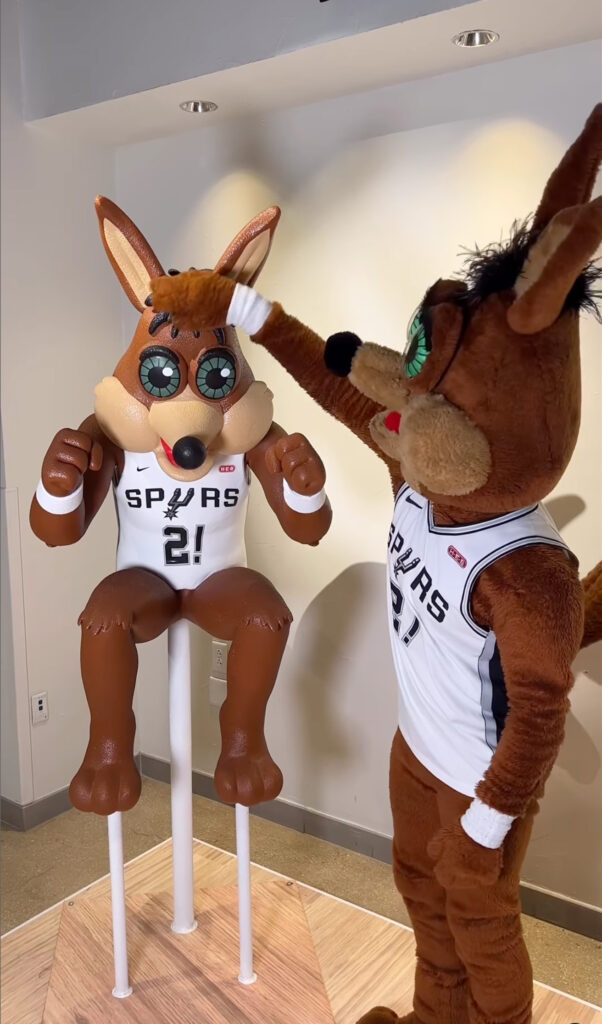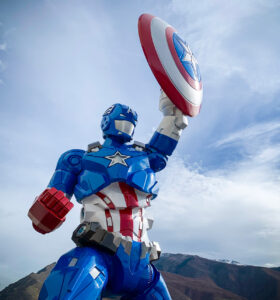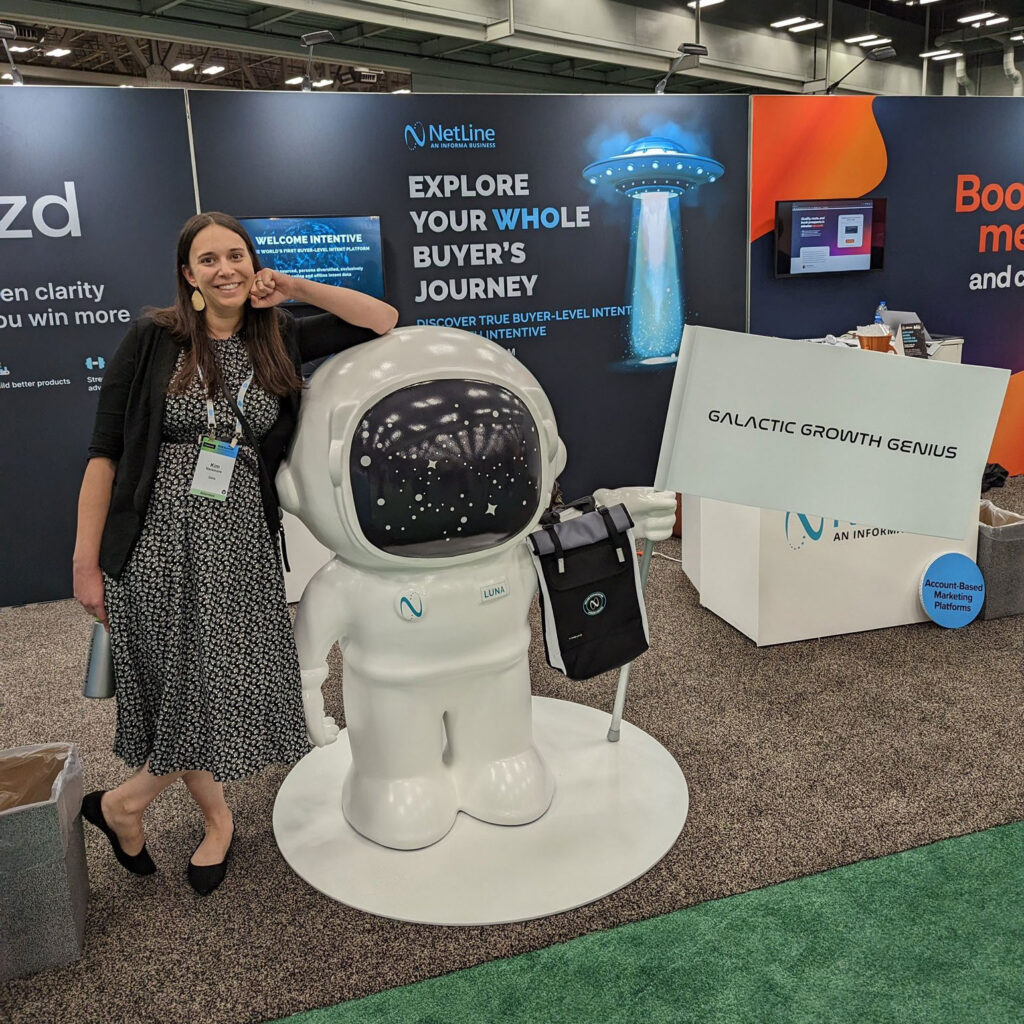3D Mascots
We build 3D Mascots
Table of Contents
3D Mascots: A Deep Dive into Modern Brand Identity
In the electrifying realm of the digital frontier, the race to stand out has rocketed to fever pitch levels! Riding the tidal wave of tech innovation, large 3D mascots have burst onto the scene, becoming not just a trend but a revolution! From the giants of industry to the coolest niche startups, 3D mascots are no longer optional; they’re the dazzling stars leading brand identity, captivating audiences, and ensuring unforgettable engagements!
Dive with us into this exhilarating journey, as we unravel the magic behind 3D mascots, unveil their crafting secrets, spotlight iconic examples, and tease the thrilling future vistas they’re set to dominate in the business cosmos!
What is a 3D Mascot?
In the heart of downtown, amidst the usual hustle and bustle, a colossal spectacle rises, casting an imposing shadow and drawing gasps from onlookers. It’s “Captain America”, the larger-than-life 3D mascot, towering several stories high, a gleaming symbol of innovation and creativity. Every detail of Captain America, from the vibrant colors of its design to the intricate textures, is rendered in breathtaking detail, making it feel as if a mythical creature has sprung to life amidst the concrete jungle.
Children point in awe, their eyes wide with wonder, while adults snap selfies, dwarfed by the gigantic figure behind them. As the sun sets, Captain America comes alive with a radiant light show, synced to music that turns the evening into an impromptu festival. This isn’t just a mascot; it’s a monumental beacon of imagination, showcasing the boundless potential of 3D design and the unforgettable experiences it can create. The city, once known for its skyscrapers, now finds its identity intertwined with its most enchanting resident – the unforgettable Captain America!
At its core, a mascot is a representative figure, often animated or characterized, which is used to personify, market, or promote a brand, product, or concept. The term ‘3D’ refers to three-dimensional, implying that these mascots have depth, height, and width, giving them a more lifelike appearance as opposed to traditional 2D illustrations.
3D mascots have been especially popular in sectors like gaming, entertainment, and sports. Yet, as technology has made it easier to design and deploy them, we’re seeing a surge across various industries, from tech companies to food chains.
Real-world 3D Mascot Examples
The rise of 3D design technology has birthed a series of iconic mascots that resonate powerfully with their respective audiences. Let’s dive into some prominent real-world examples that have made a significant impact:
Master Chief (Halo Series) 3D Mascot
Origin: A character from the Halo video game series developed by Bungie and now managed by 343 Industries.
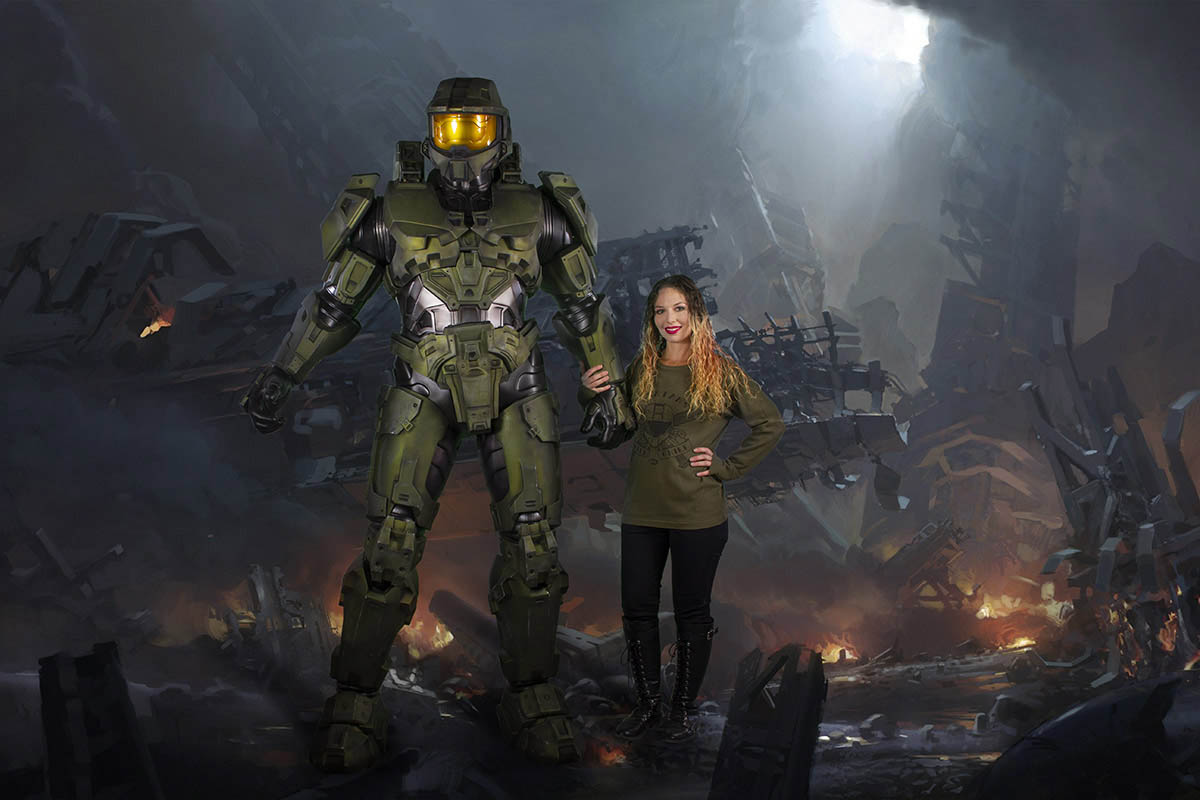
Description: Master Chief Petty Officer John-117, better known as Master Chief, is a supersoldier clad in green armor with a reflective visor. His 3D design captures every intricate detail of his armor, exuding an aura of strength and determination.
Impact: This mascot has not only defined the Halo series but has also become one of the most recognizable figures in the gaming world. The realistic 3D design has played a significant role in endearing this character to millions of fans worldwide.
Orca Security 3D Mascot
Origin: A cybersecurity company that specializes in cloud security.
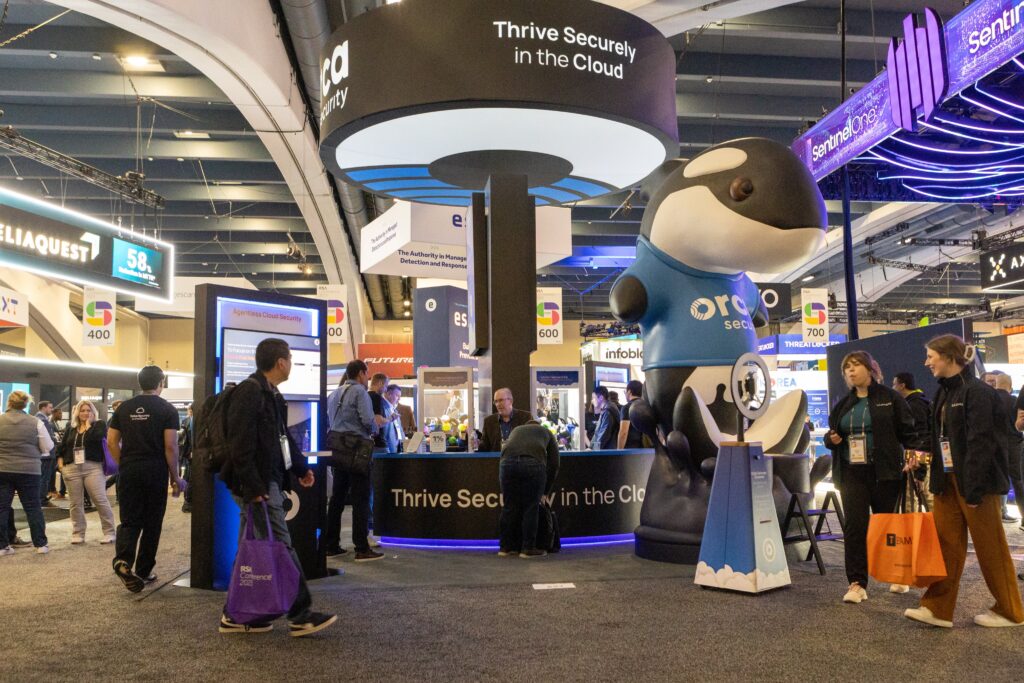
Description: The Orca mascot, as the name suggests, is an orca (killer whale) presented with a futuristic and digital aesthetic, embodying the brand’s focus on deep, comprehensive cloud security.
Impact: Through its 3D design, Orca Security’s mascot effectively communicates the brand’s dominance and depth in the cybersecurity space, resonating with its mission to provide ‘deep cloud visibility’.
CyberKongz 3D Mascot
Origin: A collection of unique, 3D-rendered Kong avatars on the Ethereum blockchain, functioning as a virtual collectible and a decentralized community project.
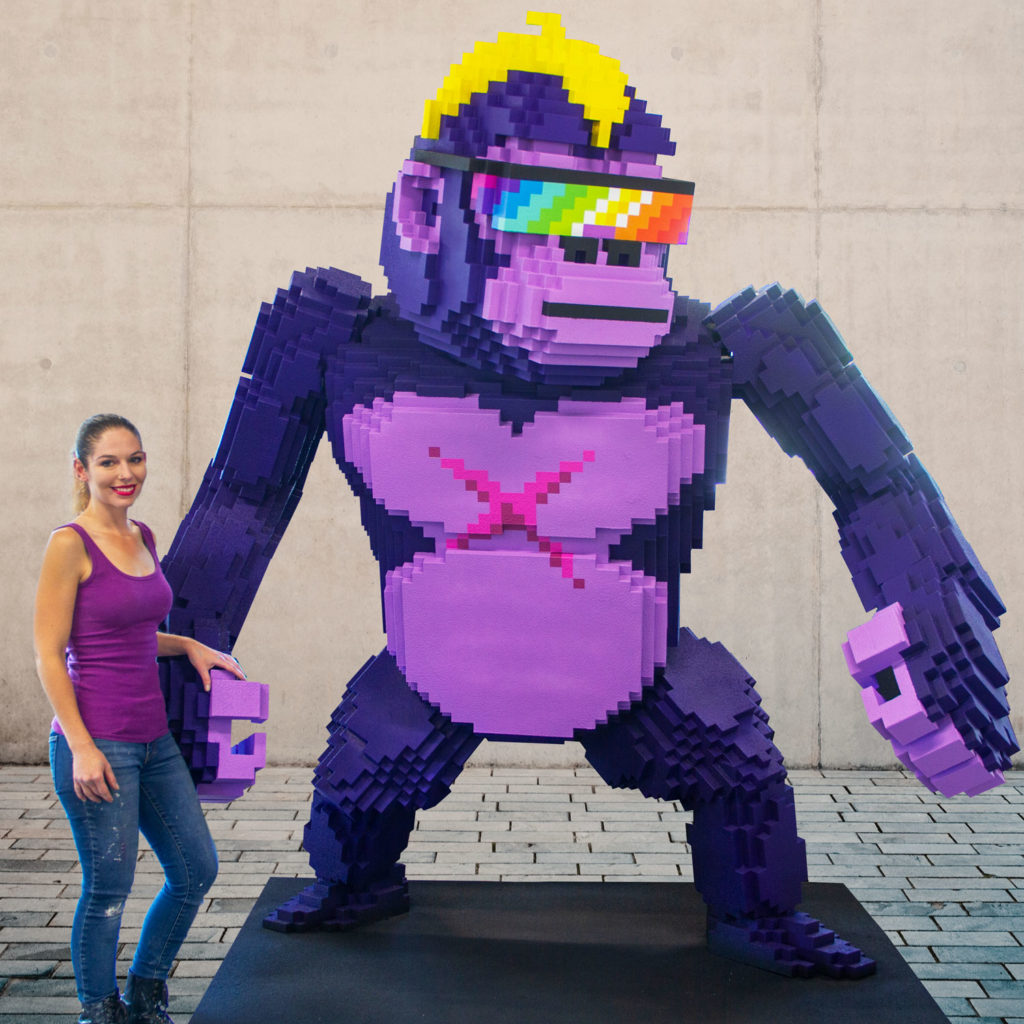
Description: These Kongz mascots, with their cyber-aesthetic, range from cool and stylish to wild and quirky. Each Kong has distinct features and accessories.
Impact: CyberKongz has not just remained a mascot but has evolved into a community, with certain Kongz even generating a banana token as a virtual currency, further showcasing the vast potential of 3D design in the decentralized and digital world.
YoUDee (University of Delaware’s 3D Mascot)
Origin: The official mascot of the University of Delaware.
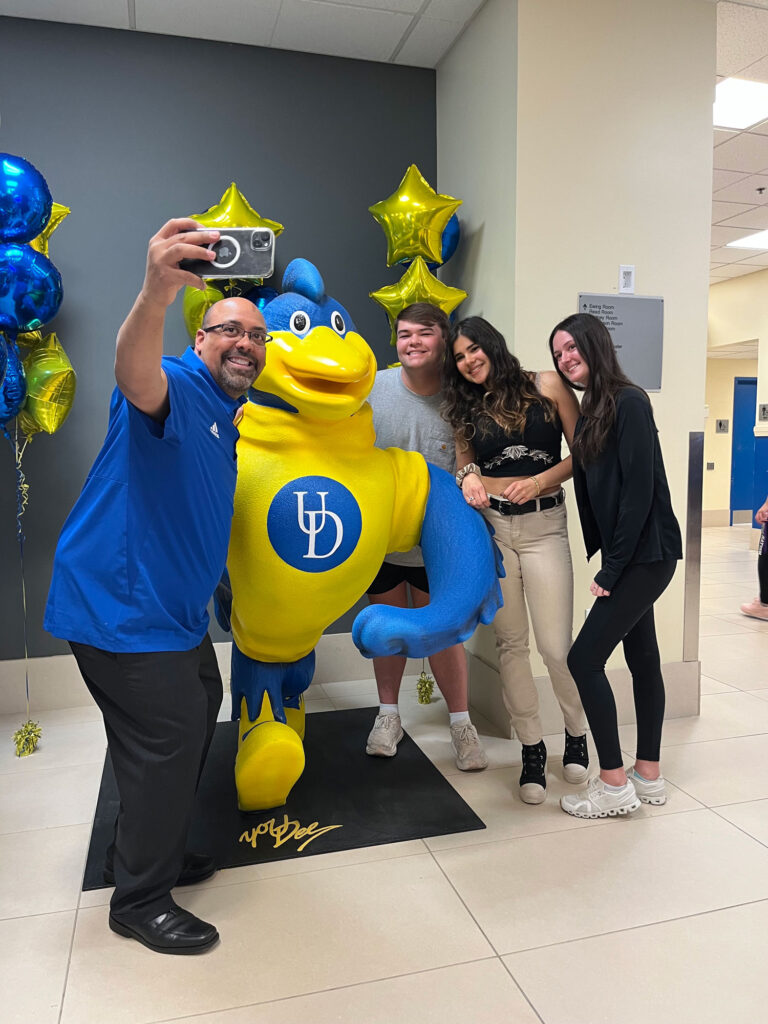
Description: YoUDee is a Blue Hen chicken, a nod to Delaware’s state bird. The 3D rendition of YoUDee is lively, energetic, and full of school spirit.
Impact: Beyond being just a mascot, YoUDee stands as a symbol of pride, unity, and tradition for the University of Delaware community. The 3D representation, seen in various media, helps engage students, alumni, and fans in a more interactive and dynamic way.
These mascots underscore the diverse applications of 3D design, from gaming and business to collectibles and educational institutions, illustrating the profound impact such designs can have in establishing brand and community identities.
Types of 3D Mascots: An Exploration of Brand Representatives
Mascots have been integral to branding and marketing for decades. The transition from traditional 2D mascots to 3D digital avatars and to 3D physical forms has offered a fresh, dynamic approach to consumer engagement. As brands seek to establish memorable identities, 3D mascots have emerged as frontrunners in various sectors. Here are a few industries where 3D mascots have become the norm.
Food Mascots
Food mascots have long been the appetizing ambassadors of many beloved brands, turning ordinary products into household names. Whether it’s Tony the Tiger proclaiming the “greatness” of Frosted Flakes or the jovial Ronald McDonald symbolizing fast-food fun, these characters add a touch of personality and relatability to their respective products. They are designed to evoke specific feelings – be it the comfort of a home-cooked meal, the excitement of a sugary treat, or the nostalgia of childhood snacks. Beyond their role in advertising, food mascots often permeate popular culture, finding their way into toys, clothing, and even theme parks. Their colorful designs, catchy slogans, and memorable jingles ensure that when consumers think of a product, it’s often these delightful characters that come to mind first, solidifying brand loyalty and recognition.
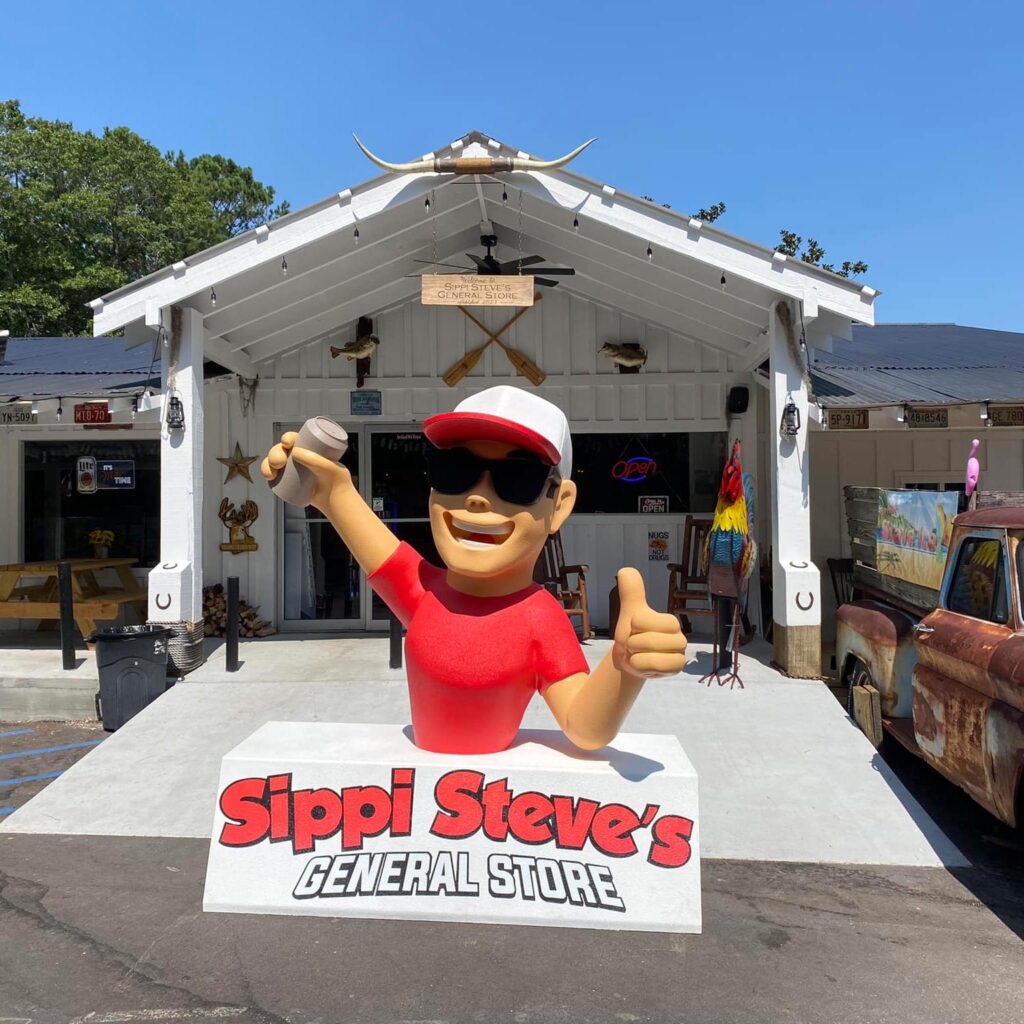
Cereal Mascots: Toucan Sam for Froot Loops have evolved from static 2D figures to dynamic 3D representations in commercials and online campaigns. Here is a detailed Top 10 Cereal Mascots and a comprehensive list of 268 Cereal Mascots.
Candy Mascots: M&M’s characters, initially presented in simple 2D designs, now have 3D personas that have starred in movies, commercials, and promotional events. Here is a detailed Top 10 Candy Mascots and a comprehensive list of 409 Candy Mascots.
Sports Mascots
Sports mascots serve as the heart and soul of athletic events, channeling the spirit, pride, and fervor of both teams and their legions of fans. Whether it’s the fierce eagle representing a football team’s strength or the playful bear cub that rallies a baseball crowd, these mascots are more than just entertainers; they are embodiments of a team’s identity and ethos. With every jump, dance, and cheer, they amplify the atmosphere, transforming stadiums into cauldrons of emotion and energy. Beyond the games, these mascots often transcend their roles, becoming cultural icons and representatives that connect teams to their broader communities. Their vibrant performances, heartwarming interactions, and sometimes hilarious antics ensure that while players might come and go, the memory of a beloved mascot endures, forever etched in the annals of sports history.
NFL Mascots: Teams such as the Denver Broncos, with their mascot ‘Thunder,’ have 3D representations to enhance fan engagement during games and online platforms. Here is a detailed Top 10 NFL Mascots and a comprehensive list of 32 NFL Mascots.
NBA Mascots and Basketball Mascots: Mascots like ‘Benny the Bull’ from Chicago Bulls have made transitions into the 3D space, adding depth to their presence in promotional materials. Outside of the NBA, 3D mascots in basketball leagues worldwide, such as the EuroLeague, have been utilized to draw in younger audiences and enhance digital interaction. Here is a detailed Top 10 NBA Mascots and a comprehensive list of 30 NBA Mascots.
MLB Mascots: The Phillie Phanatic of the Philadelphia Phillies, traditionally a real-life mascot, has seen digital 3D versions for virtual games and promotions.
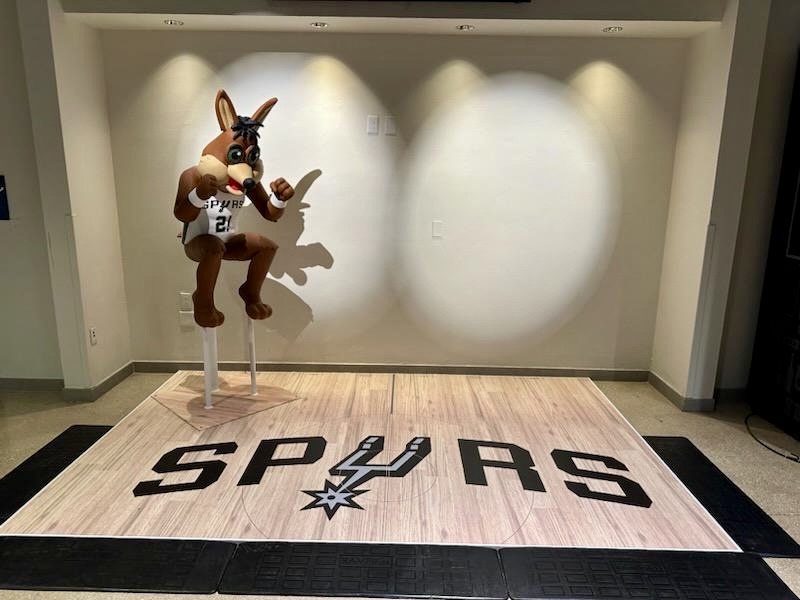
NHL Mascots: Teams like Manchester United with their mascot ‘Fred the Red’ have explored 3D animations, especially in mobile games and online promotions.
College Sports Mascots
Institutions of higher learning, with their rich traditions, have tapped into 3D mascots to engage alumni, students, and fans. College football mascots like Duke University’s ‘Blue Devils’ and University of Florida’s ‘Albert and Alberta’ have seen 3D transitions, making them prominent in virtual campus tours and online sports streaming.
College Basketball Mascots: In the college basketball arena, mascots like the iconic Sparty mascot and the bulldogs mascot have become center court, captivating fans during games. Here is a detailed Top 10 College Basketball Mascots and a comprehensive list of 344 College Basketball Mascots.
Company Mascots
In today’s technologically advanced age, the transition of company mascots into 3D realms offers a tactile depth and dimensionality previously unexplored. These aren’t just virtual images on a screen; they’re carefully crafted, three-dimensional embodiments that can rotate, interact, and even simulate real-world physics, casting shadows and reflecting light. This move from flat, 2D representations to more voluminous 3D figures allows brands to engage with audiences in a much more immersive manner. When displayed in augmented or virtual reality settings, these mascots can be virtually touched, walked around, or interacted with, creating an illusion of physical presence. This tangible sense of depth and space not only elevates brand messaging but also provides a fresh, contemporary touchpoint for audience engagement, ensuring that the mascot remains an integral part of the modern consumer experience.
Insurance Mascots
In the often-complex world of insurance, mascots play a pivotal role in humanizing and simplifying the message. Characters like Geico’s witty gecko or Progressive’s relatable “Flo” have become household names, offering a touch of humor and personability to an industry that can often seem intimidating. These mascots serve as friendly faces that break down complicated terms and policies into digestible tidbits, fostering trust and understanding. Beyond their marketing appeal, they embody the core values of their respective companies: reliability, protection, and care. By giving a face to the brand, insurance mascots ensure that customers don’t just see a corporate entity, but a familiar and trustworthy companion in their journey towards financial protection.
School and Educational Institution Mascots
Mascots in educational settings, from elementary schools to prestigious universities, are more than just playful figures cheering from the sidelines. They encapsulate the spirit, history, and values of the institution they represent. For students, alumni, and faculty alike, these mascots serve as a rallying point, fostering a sense of belonging and community pride. Whether it’s a fierce lion symbolizing strength and courage or an owl representing wisdom and knowledge, these figures become deeply intertwined with the collective memories of school events, sports competitions, and ceremonial traditions. Over time, they evolve beyond their visual representations, embodying the hopes, aspirations, and achievements of generations of learners, and stand as enduring symbols of the institution’s legacy and vision.
Gaming Mascots
In the realm of video gaming, mascots have transformed from mere characters to iconic symbols that define entire franchises. Think of Mario, the jovial plumber who became the face of Nintendo, or Sonic the Hedgehog, who sped his way into Sega’s spotlight. These mascots are more than just playable characters; they encapsulate the essence of their respective games, resonating with gamers across generations. Their distinct designs, signature moves, and memorable backstories endear them to fans, making them focal points in marketing campaigns, merchandise, and even spin-off titles. In a constantly evolving industry where new games are released at a rapid pace, these mascots provide a touch of nostalgia and continuity, bridging the past and present of gaming culture.
3D mascots transcend traditional branding methods. They offer a multi-dimensional approach to storytelling and engagement. From foods to sports, from education to insurance, 3D mascots are revolutionizing the way brands communicate with their audience. As technology continues to advance, one can anticipate even more immersive and interactive 3D mascots in various sectors.
3D Mascots and Marketing: Unveiling the Three-Dimensional Magic
In the vibrant world of marketing, where brands vie for the attention of discerning consumers, 3D mascots have emerged as an ace up the marketer’s sleeve. These dynamic, immersive characters bridge the gap between fiction and reality, drawing consumers into a brand’s universe.
Multi-Dimensional Appeal
Unlike flat 2D mascots, 3D mascots can rotate, dance, express, and interact, resembling lifelike entities. The three-dimensional nature allows for more intricate details, making the mascot more visually appealing and memorable.
Enhanced Storytelling
3D mascots can engage in a series of actions, enabling brands to craft comprehensive storylines that resonate with audiences. These mascots can inhabit and navigate complex environments, allowing marketers to create richer brand worlds.
Integration with Modern Technologies
Augmented Reality (AR) campaigns featuring 3D mascots can merge the real and digital worlds, offering consumers interactive experiences. In immersive Virtual Reality (VR) spaces, consumers can ‘meet’ and ‘interact’ with these mascots, deepening brand engagement. 3D Printing offers physical forms to interact with.
Emotional Connectivity
The flexibility of 3D animation allows mascots to display a wider range of emotions, helping brands connect on a deeper emotional level. Lifelike movements and expressions make these mascots more relatable, fostering a stronger bond between the consumer and the brand.
Cross-Platform Consistency
Whether it’s a TV commercial, a mobile game, a website, or an AR app, 3D mascots maintain consistency across platforms. These mascots can be tweaked to suit different platforms while preserving their core identity. The unique antics of a 3D mascot can become viral video moments, expanding a brand’s reach. The dynamic nature of 3D mascots makes them ideal for meme culture, allowing brands to tap into current internet trends.
Long-Term Investment with Consistent ROI
Well-designed 3D mascots can remain relevant for years, allowing brands to amortize the design and development costs over extended periods. Popular 3D mascots can be licensed for merchandise, games, and collaborations, opening new revenue streams.
Enhanced Recall & Brand Loyalty
In a crowded market, a unique 3D mascot helps brands stand out, enhancing recall. These mascots act as ever-present brand ambassadors, reinforcing brand values and ethos.
In the intricate dance of modern marketing, 3D mascots offer brands an edge, transforming traditional campaigns into immersive experiences. They’re not merely characters; they’re embodiments of a brand’s soul, forging connections that 2D designs might struggle with. As technology continues to evolve and consumer expectations shift, 3D mascots stand tall (and deep).
Selected Projects Gallery
The Future of 3D Mascots: Beyond the Third Dimension
As we stand on the precipice of unparalleled technological advancement, 3D mascots, which once marked the zenith of creative marketing, are poised to leap into the uncharted realms of innovation. Here is a futuristic gaze into the thrilling evolution of 3D mascots.
Holographic Companions
Advanced holography will allow 3D mascots to be projected into our physical environment, turning them into quasi-real entities that consumers can interact with. Imagine walking into a store and being greeted by a life-sized holographic brand mascot, guiding and entertaining you through your shopping experience.
AI-Powered Personalities
Powered by artificial intelligence, future 3D mascots will learn and evolve, adapting their interactions based on individual consumer behaviors. These mascots will discern user emotions through facial recognition and voice intonations, enabling empathetic responses.
Immersive Virtual Worlds
In expansive virtual realities, 3D mascots will lead users on branded adventures, offering a mix of entertainment and immersive product placements. Leveraging AI and VR, each virtual journey with a mascot can be tailored to a user’s preferences and past interactions.
Sensory Engagements
With the progression of haptic technology, users might soon feel the texture of a 3D mascot, from the smoothness of M&M’s characters to the furry touch of Tony the Tiger. Imagine a mascot not just seen or felt, but also associated with specific sounds and even branded fragrances, creating a multi-sensory brand experience.
Interactive Digital Merchandise
Augmented Reality wearables like glasses might allow users to have a 3D mascot companion, providing insights, entertainment, or simply companionship throughout the day. Users could personalize these mascot companions, selecting colors, accessories, or even integrating hybrid features from various brand mascots.
Environmental & Social Advocacy
In an era of heightened social responsibility, 3D mascots will champion causes, from environmental conservation to social justice, aligning with brand values and societal needs.
Seamless Integration in Daily Life
Through IoT (Internet of Things) integration, 3D mascots could become a part of our homes, guiding us through recipes, workouts, or even offering daily affirmations and news.
The Ethical Paradigm
As these mascots become more integrated and personalized, brands will grapple with ethical considerations regarding data privacy and user consent. The design and narratives surrounding 3D mascots will need to reflect a diverse and inclusive world, avoiding stereotypes and biases.
The future of 3D mascots extends beyond marketing, promising a blend of fantasy and reality that enriches daily experiences. As they evolve, these mascots will not just represent brands but will become intricate facets of human interaction with technology. The line between reality and the virtual realm blurs as we journey forward, with 3D mascots acting as our charismatic companions into the future.
Pricing of Custom 3D Mascots
The cost of mascots are based on the volume of materials (size of the model), type of materials, production labor, and installation time, as well as other elements unique to the project. Each masket is bid individually and the best way to determine price is to email us, call us at 385-206-8700, or fill out the form below and let us bid on your project.
Get a Free Price Estimate for 3D Mascots
Custom Fabrication Workflow
Questions & Answers about 3D Mascots
3D Digital Mascots Q&A
What is a 3D mascot? A 3D mascot is a character or symbol, often representing a brand or organization, rendered in three dimensions. Unlike traditional 2D mascots, which are flat and static, 3D mascots have depth and can exhibit lifelike movements and interactions.
How are 3D mascots different from 2D mascots? 3D mascots have depth, texture, and can be viewed from multiple angles. They can be animated to move and interact in ways that resemble real-life entities, whereas 2D mascots are flat representations limited to a single perspective.
Why are 3D mascots becoming popular in marketing? 3D mascots offer a more immersive and interactive experience. Their lifelike presence can grab attention, create emotional connections, and offer memorable brand interactions, making them powerful tools for modern marketing strategies.
Can 3D mascots be used in virtual reality (VR) or augmented reality (AR) campaigns? Absolutely! 3D mascots are particularly suited for VR and AR campaigns. In VR, they can guide users through virtual worlds, while in AR, they can be superimposed onto the real world, providing an interactive mixed-reality experience.
Are 3D mascots expensive to create? Initially, creating a 3D mascot can be costlier than a 2D version due to the complexities of 3D modeling, rigging, and animation. However, once created, they can be used across various platforms and campaigns, offering a potential return on investment over time.
How are 3D mascots designed? Designing a 3D mascot involves conceptualization, sketching, 3D modeling, texturing, rigging (setting up the skeleton for movement), and animation. Specialized software like Blender, Maya, or ZBrush can be used for these processes.
Do 3D mascots replace human brand ambassadors? Not necessarily. While 3D mascots offer unique advantages, human brand ambassadors bring authenticity and real-world relatability. Often, brands use a combination of both to enhance their marketing strategies.
Can consumers interact with 3D mascots? Yes, especially with advancements in AR and AI. Consumers can engage with 3D mascots in interactive ads, mobile apps, or even through AR-enabled experiences, where they can see mascots in their environment and interact with them.
What are some famous 3D mascots? While many mascots have transitioned from 2D to 3D over the years, some notable 3D mascots include the M&M’s characters, Tony the Tiger in some of his recent animations, and video game mascots like Mario in “Super Mario 3D World”.
Physical 3D Mascots Q&A
What file type is required to make a character model? We work with all architectural CAD programs including AutoCAD, Revit, Chief Architect, ArchiCAD, Maya, 3DS Max Design, Zbrush, and Sketchup, just to name a few. If you design in 3D, we will start with your 3D files. If you have 2D blueprints and elevations, or artist’s sketches, we can build a diorama from these files as well. If all you have is an idea or a napkin drawing, we can start with that.
What technology do you use for character models? It can be a number of different technologies, individually or combined. These range from 3D Foam, 3D printing, CNC Cutting, laser cutting, laser etching, metal cutting, welding and bending, casting, molding, sculpting, painting, airbrushing, laminating, vinyl printing, and woodworking – all meant to produce highly engaging characters that fit your exact needs.
What is the material used? We match the correct material and fabrication process to your requirements in terms of presentation, size, and transportabilty. We fabricate in our model shop using different types of foam, wood, metal, resins, and acrylics. We can also 3D print in digital plastic, UV-cured resin, plastic, rubber-like, acrylic, and nylon.
What is the largest character model you can make? There is no limit to the size of model. Transportability will be your only concern on an extremely large character model.
What is the turnaround time for a character model? This depends on the features of the model itself as well as the scale of the model. We usually ask for six to eight weeks from the time we take the order to when you will receive the model. Large projects can take four to six months or longer. We understand that sometimes deadlines are tight and we can accommodate rush orders.
What features can a character model have? In addition to the physical 3D character model with the proper color and appearance, you can elect to ask for special lighting, sound, and movement.
If I want a second character model is it cheaper? Our pricing is based on the fabrication costs and the time it takes to prepare your design. The second model may cost less if the same design is used.
How is the completed model shipped? Once your model is complete, we wrap it in foam and ship it in one or more custom-built crates via motor cargo. The crate can also be used to store your model or for transport between trade shows. Models generally arrive within 2 – 7 business days and to accomodate extremely large projects, we ship via oversize carriers. We have shipped projects of all sizes, including a 70-foot statue.
Do you have a question we didn‘t answer? Don’t hesitate to contact us at 1-385-206-8700 or [email protected].
Worldwide Delivery
WhiteClouds has delivered models around the world.
The Evolution of 3D Mascots: A Journey Through Digital Dimensions
The realm of mascots has been deeply intertwined with human culture for centuries, serving as symbols of unity, identity, and spirit. As technology evolved, so did these iconic figures, transitioning from mere symbols and 2D representations to dynamic 3D embodiments.
The Dawn of the Digital Age: Early 3D Renderings
In the early 1980s, with the inception of computer graphics and digital modeling, the first seeds of 3D mascots were sown. These were rudimentary, often polygonal, and lacked the intricate details of today. Yet, they paved the way. The launch of video games, such as Elite (1984), introduced users to a three-dimensional space, subtly laying the groundwork for the 3D mascots that would soon follow.
Gaming: The Catalyst for Change
The 90s witnessed an explosion of video game consoles. As technology advanced, gaming mascots transitioned from 2D sprites to 3D models. In 1996, Super Mario 64 shift from a 2D side-scroller to a 3D world was monumental, redefining the gaming landscape. In 1998, Sonic Adventure, the blue hedgehog, embraced the 3D realm, showcasing the potential of mascots in three-dimensional spaces.
Advertising Adopts 3D
With the success of 3D in gaming, advertisers recognized its potential. By the late 90s and early 2000s, famous mascots known in 2D form began to receive 3D makeovers. M&M’s characters made a significant leap into the 3D world, becoming more relatable and engaging, thus setting a trend for other brands to follow.
Rise of CGI in Films
Computer-Generated Imagery (CGI) in movies presented opportunities for the creation of mascots that were exclusively 3D. From Toy Story (1995), while not a mascot in the traditional sense, Woody and the gang became symbols for Pixar, showcasing the studio’s 3D animation prowess. Animated mascots started to appear in opening sequences of film studios, adding a touch of identity and magic before a movie began.
Augmented Reality (AR) and Virtual Reality (VR)
The 2010s saw rapid advancements in AR and VR technologies, allowing mascots to be not just seen, but also interacted with in virtual spaces. Sports events began using 3D mascots in AR-driven presentations. Fans could interact with these virtual mascots, merging reality with the digital realm.
The Societal Impact of 3D Mascots
3D mascots, over the years, have done more than just advertise or entertain. Brands became more recognizable and relatable through their 3D mascots. Mascots in 3D tapped into audiences’ past memories, especially when familiar 2D figures were reimagined. Educational Institutions employed 3D mascots to make e-learning platforms more engaging for younger audiences.
The history of 3D mascots mirrors the evolution of digital technology. From rudimentary polygons to lifelike figures, they’ve come a long way, leaving an indelible mark on society. As technology like holography and advanced AR emerges, the next chapter of 3D mascots promises to be even more enchanting. We’ve journeyed from mere symbols to dynamic entities, and the voyage, it seems, has only just begun.
